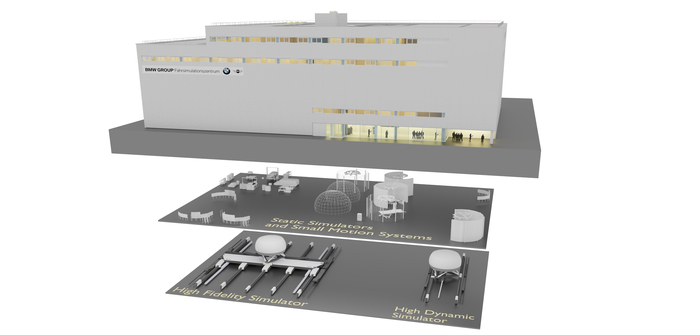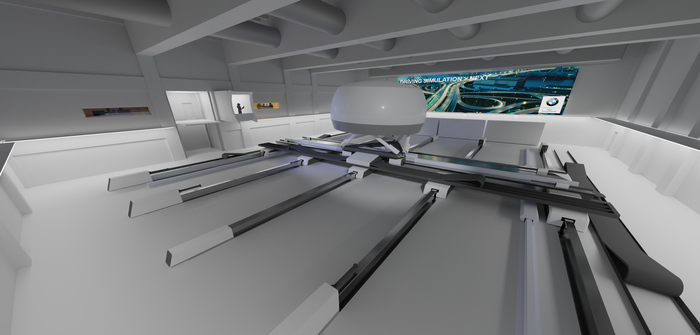The BMW group has announced it is building a new facility for the simulation of real-world driving situations. It is investing around 100m (US$116m) in the project that is planned to be completed in 2020.
The center is part of BMW’s push to advance its autonomous driving technology and will enable the company to realistically reproduce urban driving situations, a complex task that is essential to overcome this particular challenge of making autonomous driving a reality.
The 11,400m² center will be located at BMW’s FIZ Research and Innovation Center, its main R&D campus. The BMW group is aiming for the FIZ to grow by 50% by 2025.

In total, the facility will employ 157 people to run the 14 simulators and usability labs. The centerpieces of the center are two driving simulators that are specifically designed to meet requirements for testing highly complex automated driving systems. The new ‘high-dynamic simulator’ is able to generate longitudinal and transverse acceleration forces of up to 1.0g. It will be used to test new systems and functions by replicating evasive maneuvers, full braking and hard acceleration.
A second unit, the ‘high-fidelity simulator’, can provide a detailed rendering of real-world driving characteristics: braking and accelerating while cornering, driving on roundabouts and a rapid series of multiple turn-off manoeuvers can be reproduced with high precision in this simulator’s almost 400m2 motion area. This means that, for the first time for BMW, complex urban driving situations can be replicated under laboratory conditions.
The systems to be tested are fitted in a vehicle mock-up attached to a platform inside the dome of the driving simulator. Mounted on an electromechanical hexapod system, the dome can be moved longitudinally and transversely by an electric drive while also being turned. In order to give the drivers a realistic visual experience of the simulated driving situation, the dome housing the mock-up is equipped with a projection screen that is precisely synchronized with the vehicle movements and the sound simulation.
BMW says that the new simulators will make it possible to create test conditions which until now could only be experienced with real vehicles on the road, but with the added advantage of repeatability.
By Illya Verpraet


